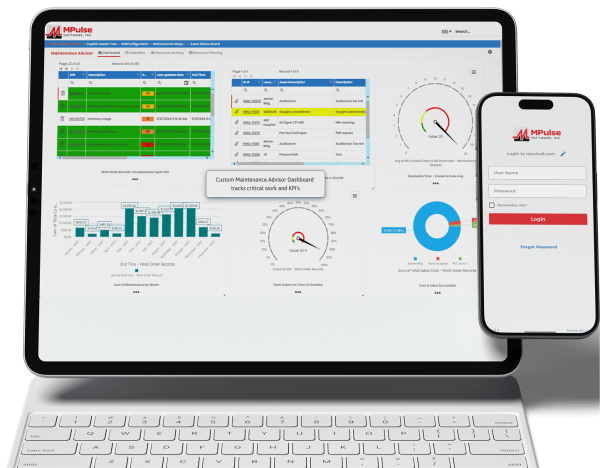The type of assets found in healthcare facilities is vast. Maintenance needs can range from facility HVAC systems and generators to medical equipment to electrical and plumbing repair to cleaning supplies. As a result, healthcare organizations need the right tools to manage maintenance for all these assets, whether it’s a critical piece of equipment or a light bulb. CMMS software for the healthcare industry can help by providing a reliable central repository for your maintenance and safety data. Here are common maintenance triggers in the healthcare industry.
Table of Contents
Preventative Maintenance Software for Healthcare
Here are common maintenance triggers for healthcare organizations.
Breakdowns
While healthcare organizations seek to reduce breakdowns whenever possible, sometimes it’s inevitable.
Healthcare organizations use a run-to-failure maintenance strategy when an item isn’t crucial, it can be repaired or replaced quickly, the failure is immediately obvious, and the parts and supplies are inexpensive. Typical examples include light bulbs in non-emergency equipment or facilities, and batteries for simple equipment like remote controls or wireless computer keyboards and/or mice.
Time
Triggers for maintenance based on time are common for seasonal equipment or assets that must be maintained no matter how much they have been used. Time-based triggers should give time to acquire any necessary parts and supplies, as well as to make the repair.
Timed preventive maintenance is simply based on the time between PM tasks—such as days, weeks, months, etc. For example, inspections need to occur at specific time intervals to help maintenance teams spot issues before they occur. Common time triggers include items like fire alarms, elevators, and seasonal facility equipment (i.e., HVAC units).
Usage
Usage triggers maintenance tasks using a specific meter. You can choose meters like mileage, usage time, production volume, pressure, flow rate, etc.
Over time these repairs create historical data for the asset. Then, maintenance managers can determine if repairs were successful or if they should adjust the PM schedule based on performance. For example, if an asset breaks roughly every 1,000 hours of usage time, set your trigger for 900 hours.
Events
Event triggers happen after specific events. For example, if it snows, the facility’s walkways, parking lots, driveways, entrances, etc., need to be clear of ice and snow for accessibility.
Emergencies are also event triggers. Emergency management triggers tasks such as conducting inspections; implementing safety measures; managing resources, supplies, and personnel; gathering data for insurance purposes, etc.
Condition
Condition-based maintenance (CBM) keeps tabs on the actual state of your critical assets by recording the output of any meters and gauges on that asset. When an asset’s condition changes outside of specified ranges, a trigger lets you know immediately so you can react to prevent breakdowns before they happen.
CBM may apply to the maintenance of high-risk medical equipment. That includes all life support equipment and any other device for which there is a risk of serious injury or death to a patient or staff member should it fail. Maintenance activities and frequencies should follow manufacturers’ instructions and recommendations for maintaining, inspecting, and testing all medical equipment.
CMMS software enables healthcare organizations to manage maintenance for critical assets, while also meeting government regulations and safety requirements.
Contact us to learn more.






